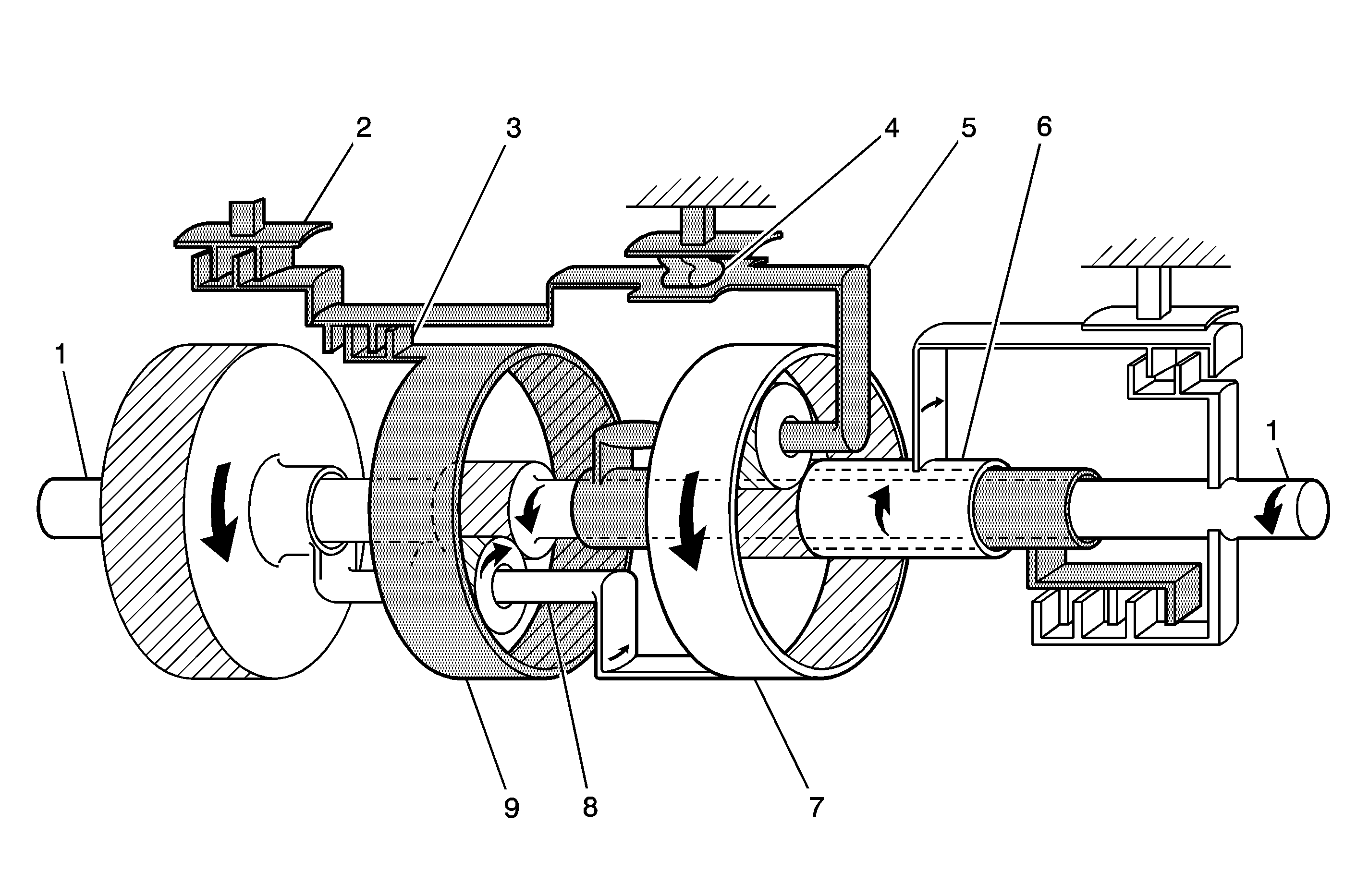Operation Clutch
Low clutch
| Engages the rear internal gear with the front carrier
|
Low and reverse brake
| Locks the front carrier
|
Rotating Conditions Of The Gear And Carrier
--
| Gear
| Front
| Rear
|
Input rotation n
s
RPM
| Internal Gear
| Rotates Clockwise (N
i
RPM)
| Locked (Stationary)
|
Output rotation: n
c
RPM
| Carrier
| Locked (Stationary)
| Rotates Clockwise (n
c
RPM)
|
n
s
is greater than n
c
| Sun Gear
| Rotates Counterclockwise (N
s
RPM)
| Rotates Clockwise (n
s
RPM)
|
n
s
is greater than n
c
indicates that output rotation has been reduced compared to input rotation. Engine brake occurs because the low clutch and the low and reverse brake are engaged.
|
The operational clutch, input and output, and rotating conditions of each gear and carrier are almost the same as those in the "L" range. However, since the low and reverse brake is not operating, the rear internal gear is locked
only against counterclockwise rotation by the 1-way clutch, and can rotate clockwise.
Even if engine brake is desirable, the rear internal gear is allowed to rotate clockwise. Therefore engine brake does not occur.


